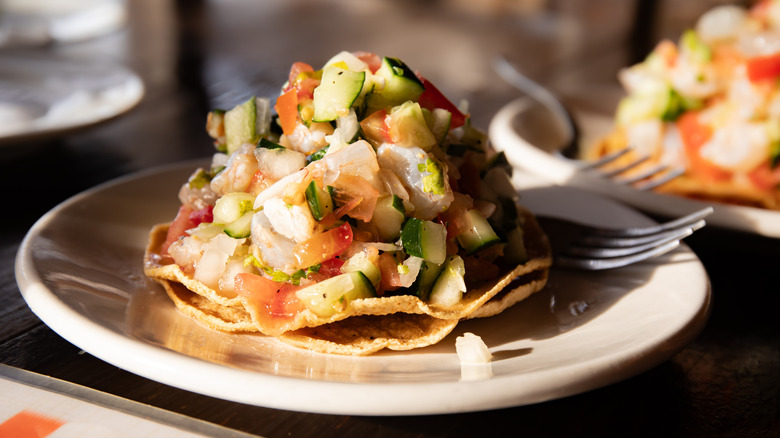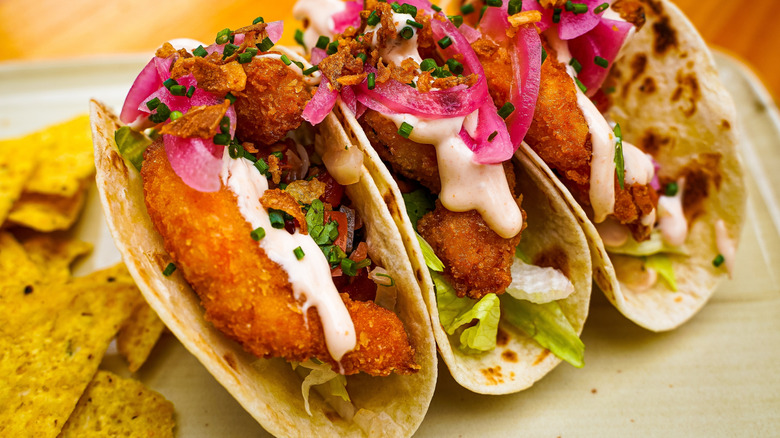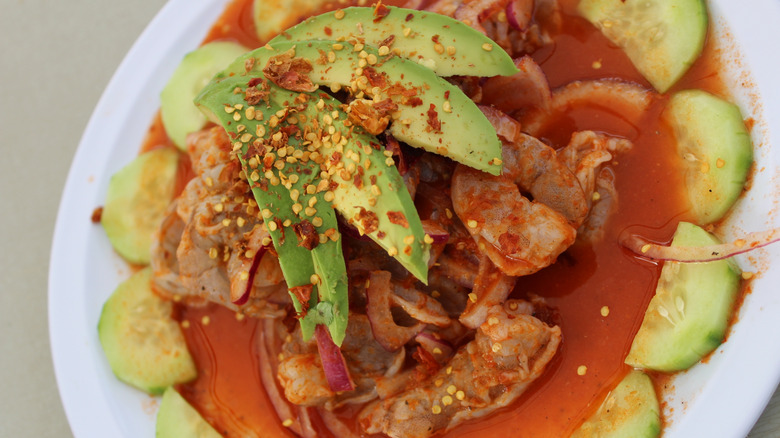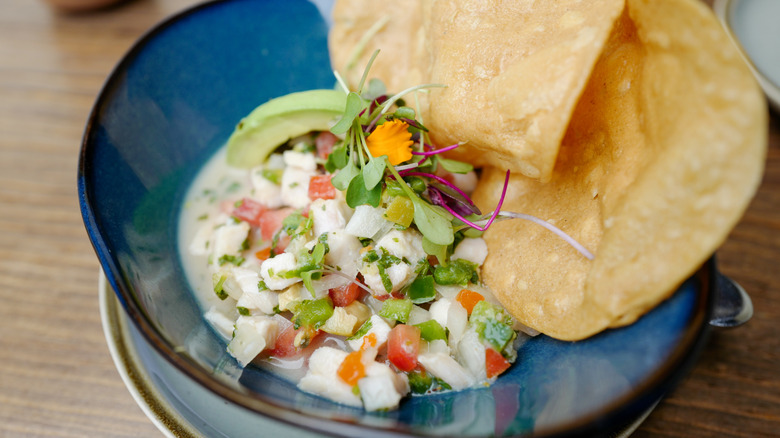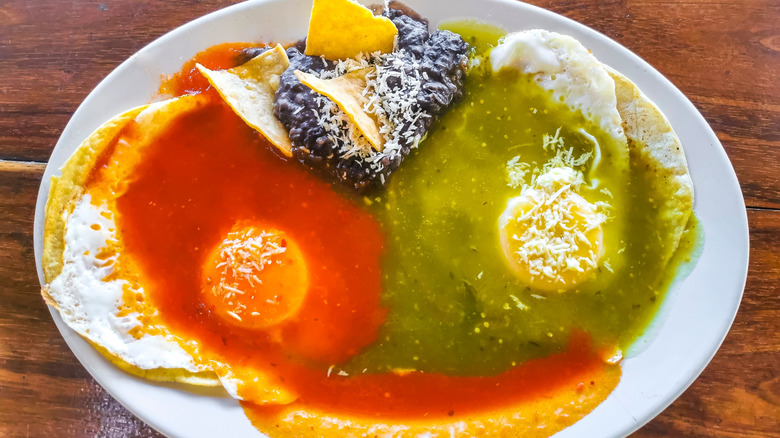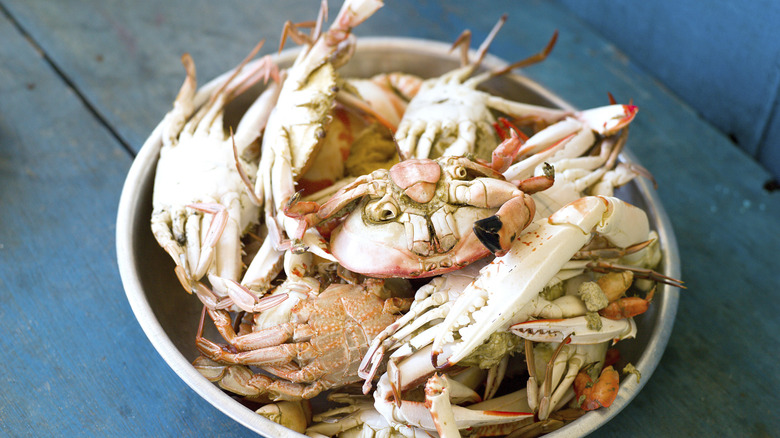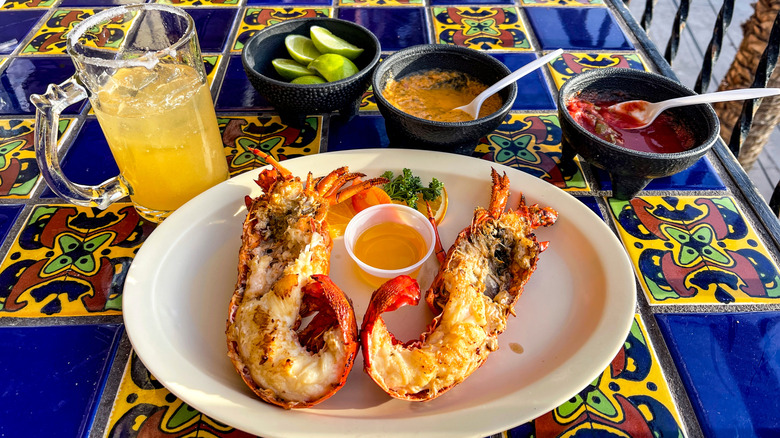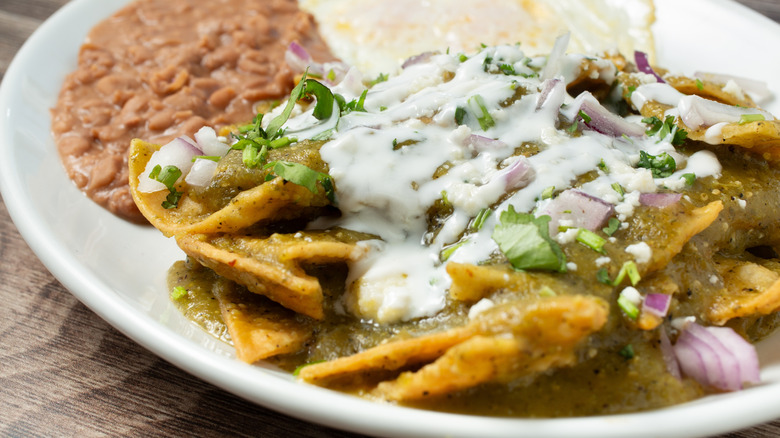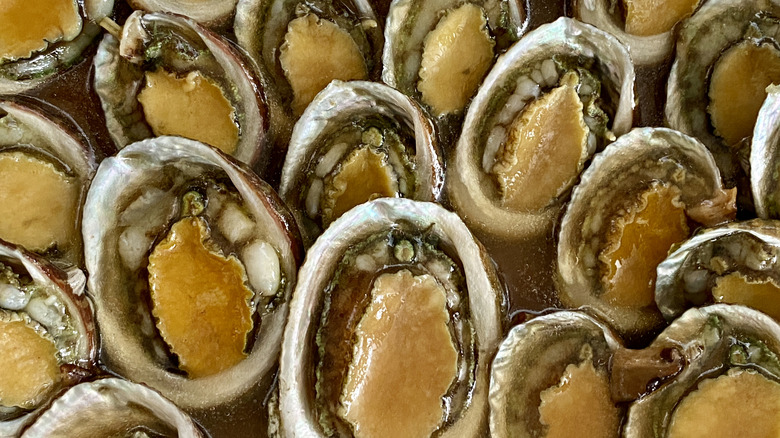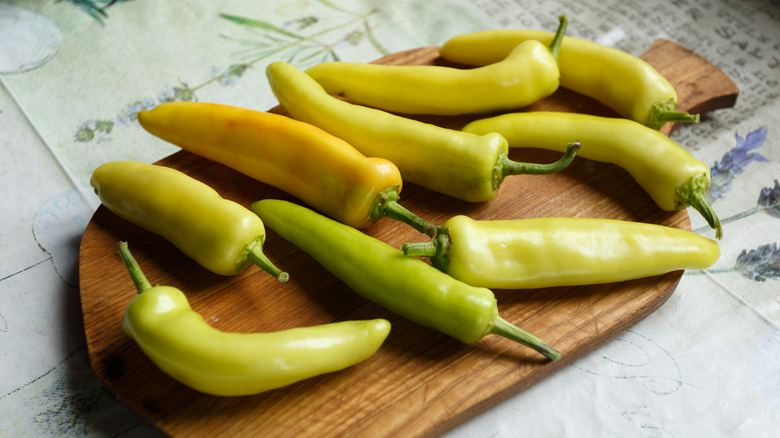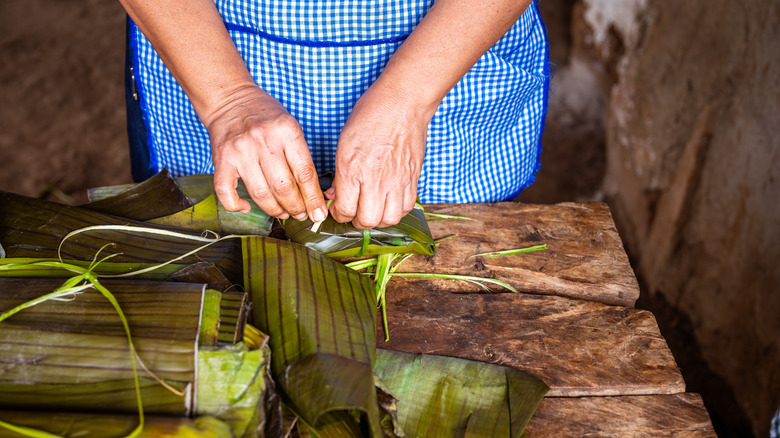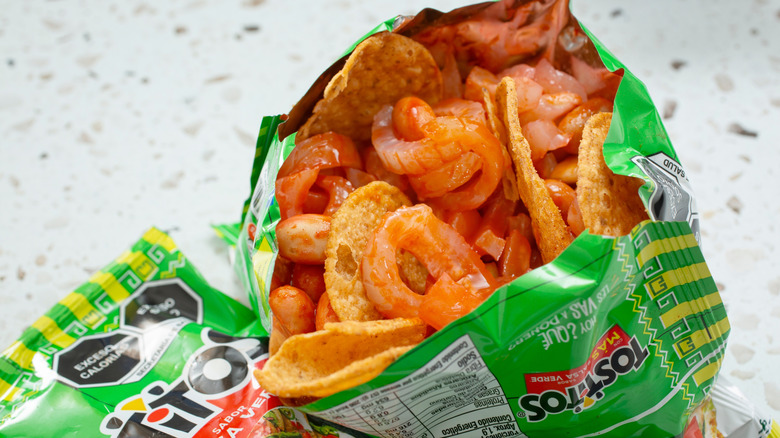11 Essential Baja-Style Mexican Dishes You Should Definitely Try
Mexican food is far from a monolith. Each of the country's regions has its own unique culinary style, shaped by its history and geography. For instance, the cooking of Baja California, the long peninsula along the Pacific coast just south of the border with California, shares several features with California's regional cuisine. Both states boast mild, Mediterranean-like climates and landscapes, which have led both to flourish as wine-growing regions. And while trendy California chefs boast of their creative use of local ingredients, Baja California chefs have been doing this all along, and some of the state's most celebrated dishes are simple but flavorful creations featuring seafood caught off the state's long coastline.
Baja California's food is also influenced by its people. Like its neighbor to the north, Baja has a long history of immigration, and savvy diners can find local versions of Chinese, Japanese, and even Russian dishes in the state. Many Baja specialties — such as Caesar salad, invented in a restaurant in Tijuana, and margaritas, once just a regional favorite – have become standard items on American menus. However, many more of the region's best dishes are still relatively unknown to American eaters. To keep you from missing out, two experts – cookbook author Yvette Marquez and Xavier Salomon, executive chef at Mezcal at Montage Los Cabos – will share their favorite Baja California specialties.
Fish tacos
In Mexico, almost anything can become a taco — just wrap a tasty morsel of whatever's around in a tortilla, and you have lunch. And as you travel through Mexico, you'll notice that the fillings of your tacos change from region to region. In Mexico City, for instance, a local favorite is tacos de suadero, filled with shredded beef braised in a rich sauce. The dry regions of northern Mexico are known for tacos filled with savory goat or lamb, while in Oaxaca, in the south of Mexico, you can sample tacos de chapulines, filled with spiced, cooked grasshoppers.
All these specialties reflect what's grown or foraged locally and what locals love to cook and eat. And in Baja California, with its long coastlines, the taco filling of choice is fish — Baja's fishermen have long enjoyed simple meals of just-caught fish, quickly cooked up on an open fire and tucked into a tortilla for serving. Enterprising street vendors in Baja began to sell fish tacos, which became a popular snack among day-tripping surfers and anglers from Southern California, who brought the treat back north with them. Today, fish tacos in Baja can take a number of forms, and the fish inside them can be either simply grilled or beer-battered and fried. Topped with garnishes ranging from sliced radishes and pickled jalapenos to creamy chipotle sauce or avocado sauce, a good fish taco is a pretty and flavorful jumble of flavors and textures.
Aguachile
Cooks in Baja California can acquire seafood just hours out of the water, and many favorite dishes are designed to showcase the flavors and textures of ultra-fresh fish and shellfish. Among these is aguachile, typically fresh, raw shrimp in a spicy, cold marinade. "You can't go wrong with Aguachile," Xavier Salomon told us. "This raw seafood dish comes from the northwest region of Mexico and is traditionally prepared by submerging shrimp in liquid seasoned with chiltepin peppers, lime juice, salt, slices of cucumber, and slices of onion."
While aguachile is thought to have originated in the Sinaloa region, Baja's cooks and eaters have eagerly adopted it. The intensely spicy, yet supremely cooling dish makes a refreshing starter or light lunch in Baja's balmy weather, and the state's varied bounty of fresh seafood allows cooks to change out the traditional shrimp to give the dish a local touch, as Salomon does at his restaurant. "At Mezcal, we substitute fresh yellowtail for shrimp for our take on a kampachi aguachile — a dish that represents the freshness of the Mexican seas, with a touch of spice and tropical fruit," he said.
Fresh ceviche
A dish with ancient roots, ceviche was invented to solve a problem: how to keep raw seafood fresh and tasty without refrigeration. Long-ago cooks discovered that marinating raw fish in salt and acidic fruit juices cured it, giving it a texture much like cooked fish, and enabling it to last longer. They also realized this made the fish even tastier –- modern eaters will agree that fish benefits from a tangy touch, whether it's a squirt of lemon or a splash of malt vinegar.
Like many good ideas, ceviche spread, moving from Peru, where it originated, north through South America and up to Mexico and the Caribbean. It shape-shifted as it traveled, picking up new flavorings and ingredients everywhere it took root. It's become a favorite in Baja, where cooks toss morsels of fresh, raw fish and shrimp with lime juice until cured, then toss the drained seafood with chopped jalapenos, tomatoes, onions, and other veggies, then serve the colorful, spicy mixture on top of a toasted corn tortilla as a refreshing tostada. It's not only a perfect dish for lunch on the beach, but a great way to enjoy all of Baja's local ingredients –- from fresh seafood to locally grown produce –- in a single crunchy, juicy, spicy bite.
Huevos divorciados
Food-loving visitors to Mexico know that breakfast is worth waking up for, no matter how bad their jet lag may be — and breakfast in Baja California is no exception. "I can't resist the guacamole and the breakfasts! I'm such a sucker for traditional Mexican breakfasts — give me a plate of chilaquiles, huevos divorciados, or huevos rancheros, and I'm in heaven," Yvette Marquez said.
Among these favorites, huevos divorciados (or "divorced eggs") are the least likely to appear on Stateside menus, which is all the more reason to try them. They're much like the more familiar huevos rancheros — fried corn tortillas topped with refried beans, fried eggs, and spicy sauce — but with a fun twist: Instead of a big scoop of red chile sauce covering everything, you get one egg and tortilla covered in a tomato-based red sauce, while the other is covered with a tangy, tomatillo-based green sauce. In some versions of the dish, a wall of refried beans separates the two sauces, as if to keep the two warring parties safely separate. Not only does it have a festive, Christmas-y vibe, it's a great dish if you're among those who could never choose between red and green sauce for your enchiladas — huevos divorciados allows you to have both.
Chilpachole
If you visit Baja California, you're almost certain to see some of its vast coastline. And for food lovers, it's hard to look at all the seawater without thinking about seafood. Visitors to Baja arrive hungry for fresh seafood, and local fishermen and cooks are more than able to deliver. This is why Xavier Salomon features traditional seafood dishes on his menu — to give guests both a taste of local fish and shellfish at its best and a bit of Mexico's culinary history.
Among the dishes he features is chilpachole, a traditional spiced broth of crab and chiles. "Customarily made with a combination of crab meat, vegetables, hot peppers (ancho, chipotle, and guajillo are the most common), tomatoes, onions, garlic, and epazote, Chilpachole speaks of the power of spices and the subtle spiciness of dried chiles, all to highlight the flavor of authentic Mexican seafood," he said. This flavorful soup also lends itself to modern riffs — an Indian-inspired version served at the James Beard House, for instance, included ginger for extra spice and lentils for heft.
Puerto Nuevo lobster
Among Baja California's most celebrated dishes is perhaps its simplest: Puerto Nuevo-style lobster, which is nothing more than a fresh lobster split down the middle, grilled, drenched in butter, and served with the traditional Mexican accompaniments of tortillas, rice, and beans. The dish is said to be the invention of the wives of Baja California fishing guides, who served it to their husbands' clients at the conclusion of their fishing trips.
This simple but decadent dish is not only enormously popular in Baja California (where about 100,000 lobsters are split and grilled per year), but so celebrated that the lobster-loving coastal towns of Puerto Nuevo, Rosarito, and Ensenada each hold lobster festivals each October. These towns, by the way, are reputed to be the best places to taste the dish — and to get the most from the experience, plan to enjoy your lobster on the beach as you watch the sun set over the Pacific.
Chilaquiles
If you're going to spend a long day fishing or surfing in Baja California, you'll need to start off with plenty of energy. And this means starting off with a good breakfast. Fortunately, you'll have plenty of flavorful and hearty options to choose from, ranging from pan dulce (literally "sweet bread," which can be anything from a flaky sugar-dusted pastry to a fruit-studded yeast bun), to one of the region's many celebrated egg dishes.
And if you're looking for an egg dish that's flavorful and filling but won't weigh you down the rest of the morning, look out for one of Yvette Marquez's favorites: chilaquiles. When you order them, you'll get a plateful of freshly fried tortilla chips or strips quickly tossed in a spicy sauce (Marquez likes to make them with a tangy green sauce featuring tomatillos and green chiles) along with shredded Oaxaca cheese. Each serving of the sauced chips, which still have a bit of crunch, comes topped with a fried egg. And while not traditional, it's just as good as a light dinner as for breakfast.
Abalone chorizo
As the old saying goes, necessity is the mother of invention. Many specialties of Baja (and elsewhere) originated from the need to make the most of whatever ingredients were available. A challenge for Baja cooks in the days before refrigeration was how to keep their ample supplies of seafood fresh, and now-classic dishes of cured seafood, such as ceviche and aguachile, became popular ways to extend the shelf life of seafood while enhancing its flavor.
A unique variation on this theme is a lesser-known Baja California specialty, abalone chorizo. In this dish, finely chopped abalone is cured in vinegar and seasoned with a generous dose of paprika and red chile. The abalone's dense, chewy texture gives this preparation the mouthfeel of ground sausage, and it's a flavorful topping for tostadas or mix-in for breakfast eggs. Unfortunately, abalone are now scarce and pricy, and if you're lucky enough to find abalone chorizo on a menu, you'll pay dearly for it. To provide a more sustainable and affordable alternative with a similar flavor and texture, some Baja restaurants serve squid chorizo made with the same flavorings.
Chile asado
Food nerds love to argue about the concept of authenticity in cooking. While some snobs will argue that Tex-Mex combo plates aren't authentically Mexican, and crab Rangoons aren't authentically Chinese, others will argue that cuisines are living bodies of knowledge that evolve naturally — after all, tomatoes were once unknown in Italian cooking. And one of the main drivers of culinary change is cultural contact — Mexican cuisine as we know it is itself the result of a happy mix of indigenous and Spanish influences.
And the influences of other cultures on Mexican food haven't stopped there. In Baja California, for instance, the emergence of a sizeable Chinese immigrant community in the late 19th century also left its mark on local cuisine. Ethnic Chinese and Mexican diners alike flock to Mexicali's Chinatown to enjoy local takes on Chinese dishes. You'll not only find versions of familiar favorites such as fried rice (which may or may not have bits of avocado in it), but also only-in-Baja Chinese-influenced specialties such as chile asado — deep-fried yellow chilies served with a lemon sauce and salt for dipping. It's not something you'll ever find on a menu in Hong Kong, nor, for that matter, at Panda Express — it's just simply, authentically, itself.
Güemes tamales
Güemes tamales are another Baja California specialty that directly reflects the state's history and climate. But if you've only ever had supermarket tamales wrapped in cornhusks and filled with basic shredded meat, Güemes tamales may come as a surprise. Instead of an edible package wrapped in a cornhusk, you'll get a packet of goodness wrapped in a dark green banana leaf.
The filling too may strike you as different: It's a mixture of seasoned pork and chicken studded with raisins and olives. Even the corn masa surrounding the filling is unique: While most tamales use lard as their shortening, Guemes tamales employ a combination of lard and olive oil, which gives them a unique flavor and texture. But this unexpected flavor profile isn't as surprising as it sounds — a direct line connects the preponderance of olives in these tamales to early Spanish missionaries, who introduced olive cultivation in Baja California, and even today, olives are an important crop in the state and olive oil a part of many local recipes.
Tostilocos
No dish embodies the complex cultural dynamic along Baja California's border with the U.S. more than tostilocos, an irresistible snack of corn chips (or other crunchy snacks) tossed with candied peanuts, slivers of cucumber and jicama, bits of chewy tamarind candy, and crunchy pork rinds, then drizzled with lime juice, hot sauce, and sweet-spicy chamoy sauce. Depending on where you get them, the ingredients can vary — the base can be anything from Flamin' Hot Cheetos to pre-spiced snacks such as Tostitos, and the saucy garnishes can include Clamato or V-8 juice, for instance. The standard presentation is to make and serve tostilocos right in the chip bag — just open the bag, add the toppings, and enjoy. Think of it as a walking taco, but with the volume turned up to 11.
The history of the dish can be summarized as follows: American snack makers created vaguely Mexican-inspired chips and exported them to Mexico, where creative street vendors in Tijuana added a slew of distinctively Mexican garnishes. From here, the snack crossed the border again back into the U.S., and today it's a popular offering at Stateside snack bars and street stands catering to Mexican immigrants and expats.
